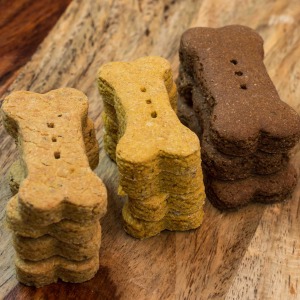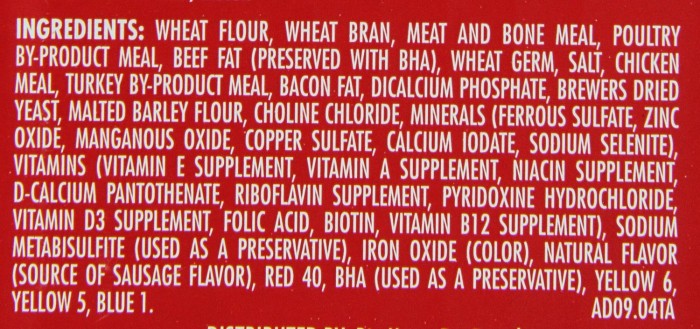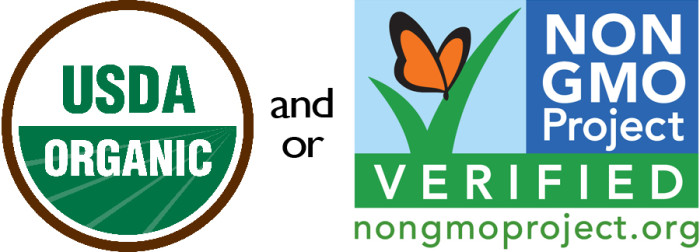With all the scares and recalls, it’s hard to know exactly what to give a dog for food, let alone a treat. Some may even wonder should they feed their dog’s treats, especially those sold at big box stores. We asked a veterinarian – Dr. Kathryn Primm, DVM , owner of Apple Brook Animal Hospital and her “Animal Stuff You Wonder About” blog – and a maker of organic dog treats – Veronica Glynn, owner of One Dog Organic Bakery – To give us the inside scoop on treating your dog right.
A Good Treat
When asked how she would define a good treat, Dr. Primm replied, “A good treat is a food item that is unadulterated.”
She then added that she gives her own dogs human food as treats, but “chosen with educated discretion.”
We then asked the same question to Glynn, who makes homemade, Non-GMO, organic dog treats using human-grade ingredients. They are in the process of completely their organic/GMO-free certification.
“A good dog treat is one that can address the dietary needs of the animal,” she replied. “Commercial dog food today is lacking in the proper nutrients and vitamins that truly support a healthy animal. The nutritional facts of dog food are calculated BEFORE the kibble is processed. During the processing and due to the high temperatures, many of the vitamins and essential minerals are lost. So a good dog treat considers these missing elements and works to “plug the holes.” Adding back the vitamins and minerals and antioxidants our pups so desperately need.”

So you should look for a dog treat that is not just “empty calories,” but is something made from whole foods and gives your dog’s nutritional value.
Ingredients
The crux of the matter are the ingredients – whatever is in that dog treat is going to make it good or bad. Let’s start with those pesky calories. Dr. Primm believes most people over-treat their pets–this is particularly bad if the treats are “junk food”–loaded with chemicals, calories and even sugar.

“Each dog owner should ask their vet for a calorie guide, personally designed for their pet,” says Dr. Primm. “When you give treats, you must account for them in the daily calorie guide. If your dog gets extra exercise, she can have more to eat. If she has a couch potato day, she needs only the basic calories. Pet obesity really shortens lives and it is worth the extra thought.”
Next, you need to think about the label. Glynn told us that manufacturers only have to list the ingredients they are adding to the product (and their sources), but not where there source obtained their ingredients.
She says you should read the label and look for the following:
- Are the ingredients certified organic and GMO-Free?
- Can the ingredients be traced to the original source?

Now Compare to One Dog Organic’s Treats Ingredients

“If you are not sure, then ask [the company],” Glynn says. “Any honest, high quality pet food company should be transparent when it comes to their ingredients.”
The main thing is to not take that label at face value – manufacturers are pros at making that list look “better than it is” says Dr. Primm.
Remember that label is part of their marketing and advertising, and we all know how trustworthy that is – if you are not sure on a label, don’t buy that treat.
Ingredients to Avoid
Dr. Primm recommends avoiding artificial colors and flavors, though she notes that since treats should only constitute a small part of the diet, it’s not critical. Above all, avoid toxic foods such as raisins, grapes, onions, garlic, chocolate and xylitol
Ingredients to Look For
Since Dr. Primm prefers whole foods (i.e. no processed dog biscuits) she uses whole human food to reward her dogs. She gives her dogs green beans and shreds of cheese (just one shred at a time – remember calories and fat!)
“At work, I carry treats in my pockets and they need to be non-perishable,” she continues. “I choose the freeze dried meats, like chicken and fish.”
And while you may feel like you are being “stingy” with the small amount of treats, Dr. Primm reminds us that dogs “appreciated what they get and do not question you.” They don’t care how big the piece is, just that they are getting some.
Big Manufacturers Vs. Small Businesses
So should you buy treats from big brand names, or from the lady down the street?
“There are two sides to this question,” says Dr. Primm “Small batches are less regulated by the government, but may have more personalized loving care. I personally avoid generic treats and anything with imported ingredients since the jerky scare.”

And some small business owners are putting their all into creating quality treats for your dog. Glynn, for example, never uses any ingredients she would not eat herself. She says her own dog is a taste tester and as mentioned above, they are working on certification to prove their quality. Most of the big names cannot claim the same.
Regardless of what type of treats you decide to buy (or make), start by talking to your vet, then reading labels and asking questions. Above all, if you are not sure about a treat, don’t feed it to your dog. No treat is worth dying for.
About the Author
Based in Wilsonville, Ore., animal lover Kristina N. Lotz is a Certified Professional Dog Trainer – Knowledge Assessed (CPDT-KA) and a member of the Dog Writers Association of America. She is the founder of A Fairytail House. In her spare time, she trains and competes in a variety of performance events with her Shetland Sheepdogs and caters to her two rescue kitties. She smartly married a Veterinary Technician, who helps keep the fur kids happy and healthy, and provides a quick resource for articles.
 Toledo, United States.
Toledo, United States.